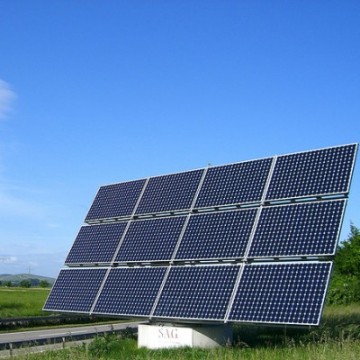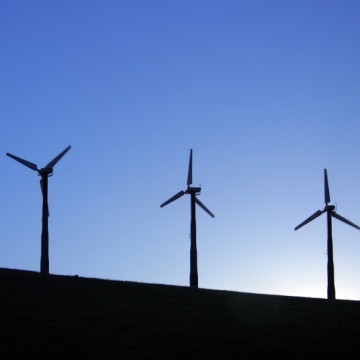Could Oregon Become a Renewable Energy Gold Mine?
Thursday, October 09, 2014

Photo credit: Schwarzerkater on Flickr
A new report from the Sierra Club showed Oregon has enough potential for utility-scale solar projects to provide 80 times Oregon’s existing electricity needs, while its on-shore wind potential is close to 20 times more than that.
Oregon currently relyies heavily on out-of-state coal plants for electricity, according to the report. Local clean energy would provide more local jobs and stable prices.
Currently, 44.7 percent of electricity sold in Oregon comes from hydroelectric dams, 33.4 percent comes from burning coal, 11.8 from natural gas, 5.2 percent is wind, while nuclear, biomass, geothermal and others make up the rest.
“During the lifetime of each plant, dollars spent to produce clean, renewable energy in Oregon are dollars spent putting Oregonians to work, while dollars spent on coal-fired electricity are mostly spent on out-of-state fuel,” said Ezra Hausman, Ph.D., an independent expert on energy and environmental economics who wrote the report. “Solar employs more than four times as many people as coal when accounting for the energy it provides.”
However, Oregon has had problems implementing green energy projects in the past, and experts believe there are still challenges ahead.
Dexter Gauntlett, a senior energy analyst at Navigant Research, says it is possible for Oregon to make the transition to higher penetration of low-carbon energy sources, especially considering the large amount of hydro already on the grid, the region's strong wind resource, and declining solar PV costs.
However, there are limitations that could slow things down, such as the need for more transmission lines capacity.
Also, the region has a relatively low cost of power compared to other states, which makes it more difficult for renewables to compete on a purely economic basis, Gauntlett said..
The cost of producing clean energy has been dropping over the years, so that now it is equivalent to fossil-fuel energy, the report found. National wind power and solar power purchase contract prices have dropped more than 60 percent in the last few years. The report said this information should encourage power companies, such as Pacific Corp, to make the switch to clean energy.
“If PacifiCorp transitions away from out-of-state coal and invests in local clean energy, solar jobs in Oregon can and will multiply,” said Paul Israel, president of Sunlight Solar and president of Oregon Solar Energy Industries Association, in a press release.
More than $9 billion of investment in renewable energy has come to Oregon over the last 16 years, according to the U.S. Energy Information Administration.

Push Back in Rural Communities

While Oregon was ranked as the fourth most energy-efficient economy in the US by the American Council for an Energy-Efficient Economy in 2013, movement towards clean energy has brought controversy in the past.
In 2013, Shepherds Flat wind farm stirred a controversy involving tax credits. The farm was awarded three separate tax credits worth $30 million, when it was later determined it should have only been given one credit for $10 million.
Community and environmental groups also have spoken out against wind farms being built near their homes. Rural Oregon residents living on neighboring farms complained about noise pollution from wind turbines, with some speculating that the windmills could damage their health.
A report from the Oregon Public Health Division found there was no threat of negative health effects.
Richard Jolly, a power lineman, founded the Blue Mountain Alliance in Oregon. After studying the environmental impact wind farms would have on the Blue Mountains and foothills, the group found that building the turbines would be detrimental to the soil and to salmong-bearing streams.
The group was surprised to find that on private lands, no environmental impact statement from the power company is required.
“I don’t oppose the projects being evaluated, but the state isn’t looking at or acknowledging the affects,” Jolly said. “It’s a big issue.”
Jolly said the best way to move forward would be for the Oregon Legislature to adopt laws that take into account the environmental impact of the placement of wind plants.
Hausman believes the best plan for implementing renewable energy is for power companies to begin looking into the possibilities and submitting requests for proposals. He explained this has worked well when other companies have worked to lower their use of coal.
“Power companies should be taking the first step forward and make clean energy a priority instead of relying on fossil fuel,” Hausman said.
Related Articles
- PGE Among The Seven Most Energy Efficient Electric Companies
- PGE Foundation Grants $100,000 to OHSU Cancer Research




Follow us on Pinterest Google + Facebook Twitter See It Read It